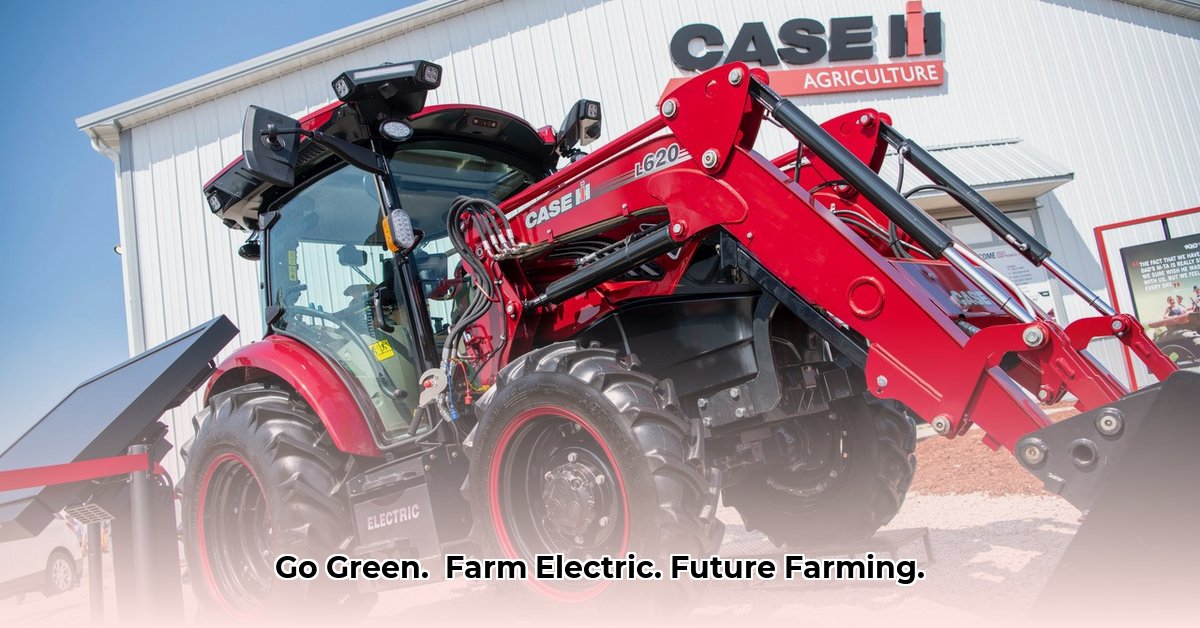
The Rise of Electric Tractors in Agriculture
The agricultural landscape is undergoing a significant transformation, driven by the increasing need for sustainable practices and technological advancements. Electric tractors, such as the Case IH Farmall 75C, represent a key element of this shift, offering a compelling blend of environmental responsibility and operational efficiency. While promising a greener future, this technology presents unique challenges and considerations for farmers of all sizes. For more details on the Case IH Farmall 75C, visit the Farmall Electric Tractor page. This article provides a comprehensive analysis of the Farmall electric tractor, focusing on its economic viability, environmental impact, and operational considerations, ultimately guiding stakeholders towards informed decision-making.
Understanding the Environmental Benefits
One of the most significant advantages of electric tractors like the Farmall is their reduced environmental footprint. Compared to diesel counterparts, they drastically cut greenhouse gas emissions, contributing to a more sustainable farming approach. This reduction aligns perfectly with the growing global emphasis on environmentally conscious agricultural practices. The quiet operation also presents a considerable benefit, minimizing noise pollution for both farmers and their communities. A quieter operation translates to improved worker comfort and a reduction in potential noise-related issues for local residents.
The Economics of Electric Tractor Adoption: A Cost-Benefit Analysis
While the environmental benefits are clear, the economic viability of electric tractors, particularly the Farmall, remains a crucial consideration. The initial purchase price of around $61,000 represents a substantial investment, placing a significant barrier to entry for smaller farms with limited capital. However, potential long-term cost savings in fuel and reduced maintenance could offset this high initial investment over time. It's crucial to conduct a rigorous total cost of ownership (TCO) analysis, considering factors like electricity costs, battery lifespan, and potential government subsidies. A detailed TCO analysis allows for a more complete understanding of the long term return on investment (ROI) associated with adopting this technology. This nuanced exploration goes beyond the initial purchase price, and helps reveal the financial picture over the lifetime of the machine.
Operational Challenges and Solutions
The operational realities of electric tractors present both opportunities and obstacles. Battery life, currently estimated at 4-8 hours depending on workload, is a key concern. Extended periods of operation may require strategic planning, potentially necessitating multiple tractors or efficient charging infrastructure. The availability of charging stations on farms remains a significant logistical challenge. However, ongoing research into battery technology, improved charging efficiency, and innovative systems like battery-swapping stations are actively addressing these limitations. These developments are critical in overcoming practical obstacles to wider adoption. Further research is needed to determine the optimal solution for various farm sizes and operational needs.
The Future of Electric Tractors: Technological Advancements and Policy Implications
The future of electric tractors like the Farmall hinges on several key factors. Continued improvements in battery technology—specifically, extended lifespan and increased energy density—are essential for broader adoption. Supportive government policies, including subsidies and tax incentives, can help overcome the high initial cost barrier and encourage investment in this sustainable technology. Investment in the necessary charging infrastructure is also crucial for seamless integration into farming practices. Government support and further technological development are key to expanding the accessibility and reliability of the technology.
Actionable Steps for Key Stakeholders
| Stakeholder | Short-Term Actions | Long-Term Actions |
|---|---|---|
| Large Farms | Conduct thorough TCO analyses; pilot programs with electric tractors | Invest in charging infrastructure; explore battery-swapping technologies; integrate into farm management systems. |
| Small Farms | Monitor technological advancements; investigate leasing or shared ownership models | Advocate for government incentives; explore potential collaborations |
| Manufacturers | Invest heavily in battery R&D develop innovative charging solutions | Focus on automation and smart farming integration. |
| Governments/Policymakers | Offer financial incentives; support charging infrastructure development | Develop comprehensive sustainability policies; facilitate research and development funding. |
| Energy Providers | Assess grid capacity; explore renewable energy integration for farm charging | Invest in smart grid technologies for optimal energy management and distribution |
Conclusion: A Path Towards Sustainable Agriculture
The Farmall electric tractor exemplifies the transition towards more sustainable farming practices. While challenges remain, addressing the economic and logistical obstacles through technological advancements and supportive policies is critical for facilitating its widespread adoption. The future of agriculture likely incorporates hybrid and electric technologies, driving the industry toward environmental responsibility and economic viability. Continuous research and development, along with collaboration among stakeholders, will be crucial to realizing the full potential of electric tractors in shaping a more sustainable agricultural future.